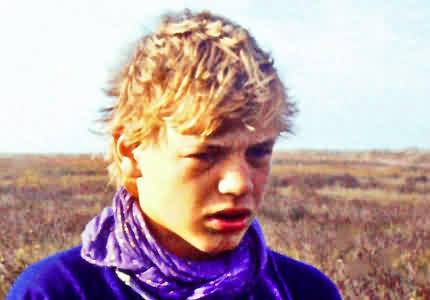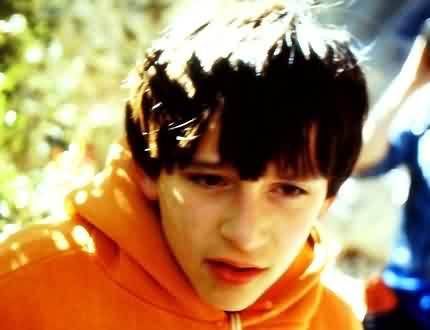source: www.youthwork-practice.com | 2000 Games, Devotions, Themes, Ideas and more for Youth Work
only for private using
Anxious children within the youth group

Anxious children within the youth group
©: www.youthwork-practice.com
Again and again we see children and young people in the youth groups who are fearful and less confidence than others. To learn to understand such children, it is important to know where those fears are coming from. It would be reckless and negligent, to simply call these children cowards or to forces them doing things which they are afraid of without fully exploring the dimension of their fear.
Understanding fears correctly
Fear is an unpleasant feeling that is associated with intense physical stimulation. Therefore, fear, at least in our society, has more often than not a bad reputation. It is said, fears are to be defeated and glory only belongs to the brave. An homage to the timid has yet to be written. In fact, at times, fear is quite appropriate; because fear is a necessary internal alarm system that prepares us to flee in the face of danger or respond in any other way appropriate to the situation. Fears you share with others can strengthen social bonds because the community acts as a protecting shield. Fear of negative consequences (e.g. injury or punishment) can help not to do anything stupid (e.g. not to dodge a car, hit another person or to steal something). In short, if we are afraid, we have to face a problem, which we need to address. Generally speaking, anxiousness can help us here.
Sometimes fears get out of control. That happens whenever fears are not an appropriate alarm system but become a burden. This kind of fear can go so far, that it prevents people from coping with their lives and also restricts their daily life. For example, if someone is afraid to use public transport or even worse, is afraid leaving the house (agoraphobia), is no longer able to lead a normal life. Those anxieties can be divided into undirected and direct (phobic) anxieties. Phobic anxiety is caused by precisely defined, in general not hazardous situations or objects. These include fears of large crowds as with agoraphobia, fear of adverse judgment by others as in social phobia. Out of this fear results another anxiety that of public speaking or any other performance in front of others. Specific fears are fears of particular objects or situations (e.g., blood, syringes, elevators, certain animals/insects, heights, water, darkness). They are also called isolated phobias. The spectrum of experienced fear ranges from mild discomfort to panic. It is important to understand that all those fears, in their basic form, are “justified.” In extreme cases, all of the above situations/objects can actually pose a real threat.
Undirected fears express themselves either in constant and exaggerated "worries" about everything (generalized anxiety disorder) or are purely experienced physically. If you experience them as an attack, we speak about a panic attack. Sometimes people do not even know where they are coming from. The symptoms can be expressed as breathlessness, heart palpitations, nausea, chest pain, sweating, dizziness, tremors or even an alienation feeling ("a standing beside feeling"). These physical symptoms are typical of any anxiety reactions. People who suffer from phobic anxiety and know what triggers anxiety, either try to tolerate this situation in a tense physical state or avoid the anxiety-provoking objects/situations altogether.

Anxious children within the youth group
©: www.youthwork-practice.com
Some fears are more or less genetic and evolve more easily than others. This includes for example the fear of certain animals/insects, heights, and narrowness. However, fundamentally speaking, people also fear situation they cannot control and we feel powerless. Ultimately, what we afraid of remains vividly in our brain. No matter how unreal or how rare the event is. For example, for young children, who are not quite able to distinguish between reality and fantasy yet, horror movies can set off a fear of darkness. Simply because certain impressions of the movie remain present in the child’s brain and therefore stir the fear of darkness. Someone who saw a plane crash might be afraid of flying in the future – no matter how rare, statistically seen, a plane crash is.
Understanding anxious children in the youth group
In a group setting children and young people express their fears by either withdrawal or by avoidance, denial and even rejection of doing certain tasks. If caught at the moment, they also might freeze or run away. They are not always able to express their fears in words either. Because the background of those fears is often unknown, it is recommended to treat those children with great care. The boundary between an anxious personality and a clinical disorder is not always clear cut and therefore not always recognized.
While in the latter professional help is needed, if dealing with an anxious personality sometimes comforting and encouraging the child can help a great deal. It’s never wrong to give it a try. However, continue only if the child or young person responds positively to it. If the fear is caused by a situation, which by the child perceives as uncontrollable, instructions and support together with developing skills, competencies and understanding can help. This creates safety for those affected. Treating a person carefully also includes respecting their fears. Therefore, group rules and excellent leadership must apply. No one is to be ridiculed because of their fears. To promote mutual acceptance, you could talk about fears and their various manifestations within the group. Is there indeed anyone who was not even once afraid? An attentive and sensible youth worker can do great in such a situation.
[ © www.youthwork-practice.com | 2000 Games and Ideas for Youth Work ]






